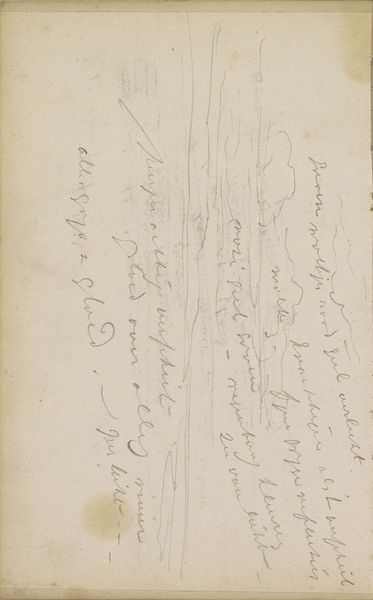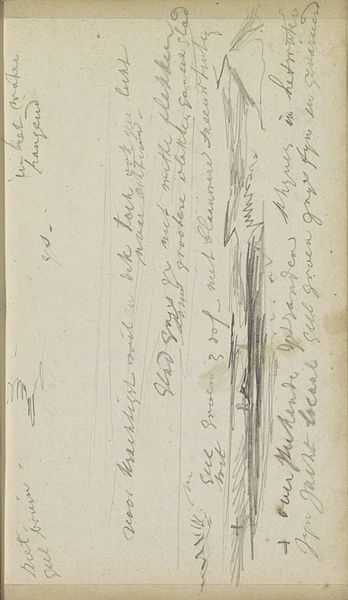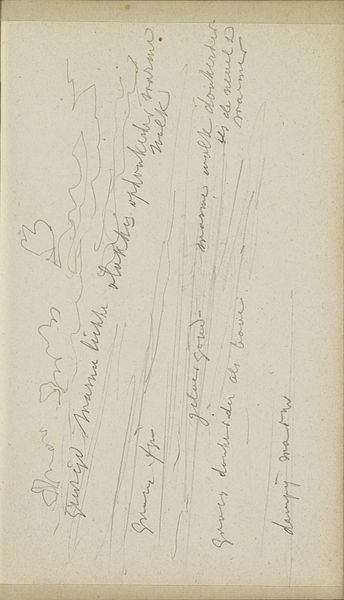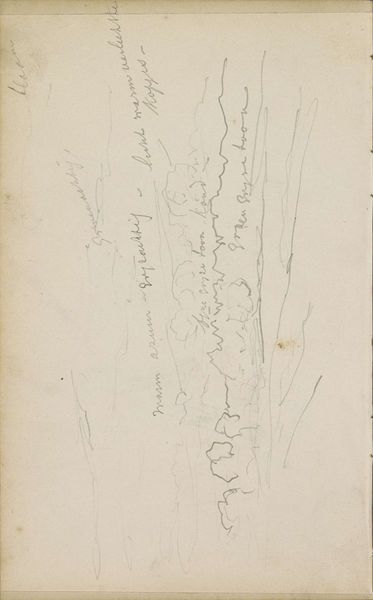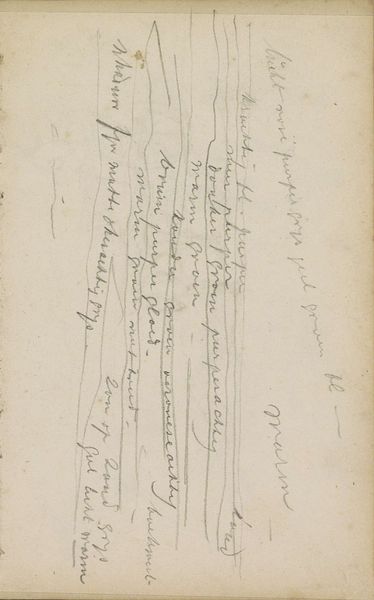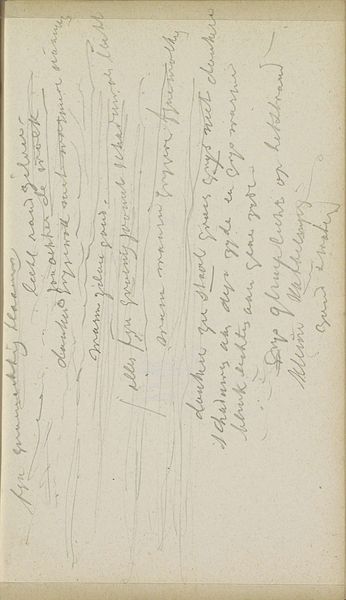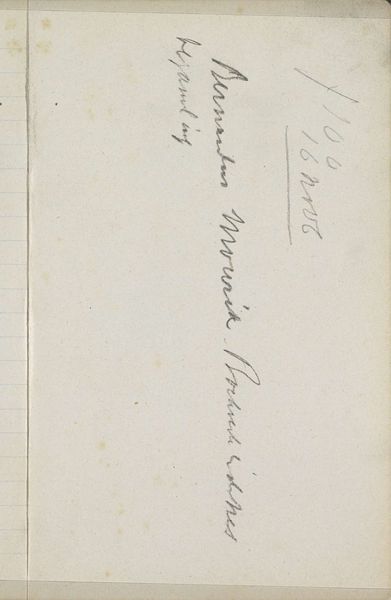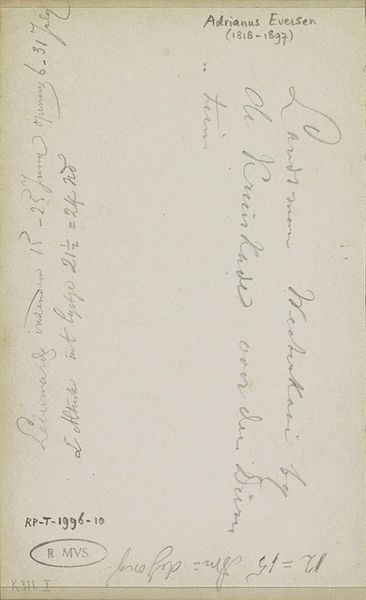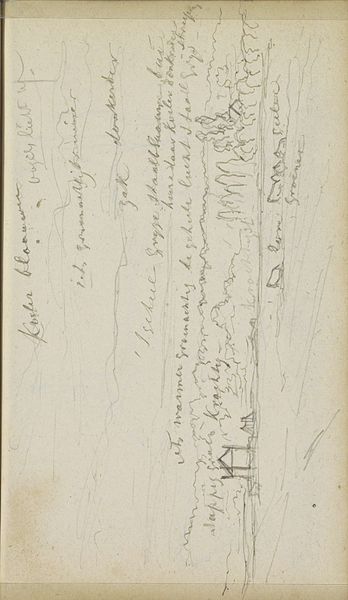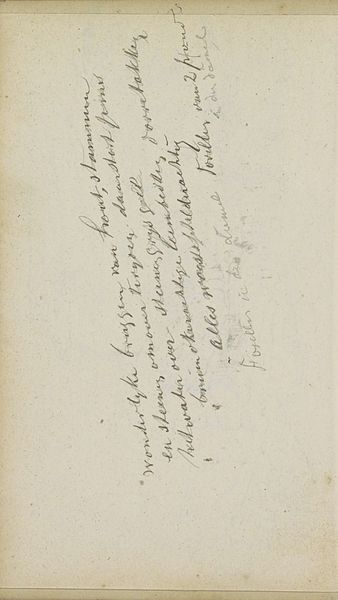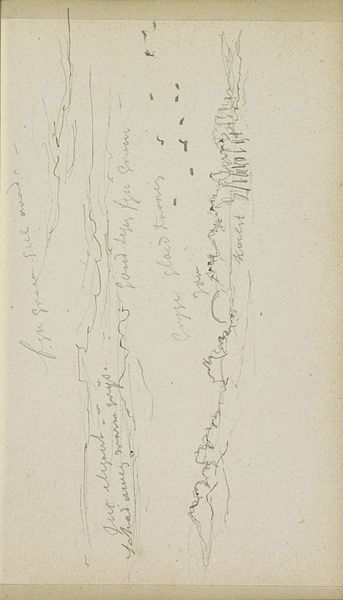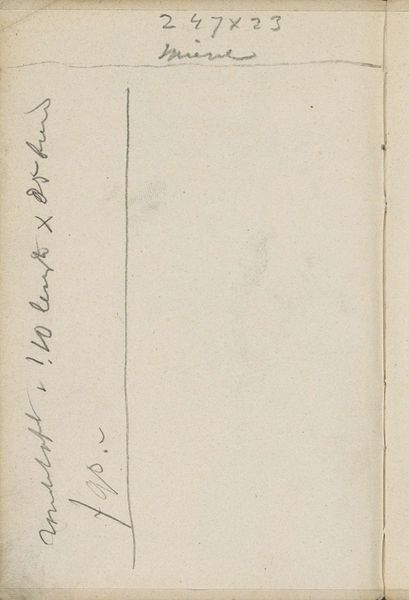
Copyright: Rijks Museum: Open Domain
This Zeegezicht, or seascape, was created by Johannes Tavenraat, who lived in the 19th century. It’s rendered simply, in graphite on paper. Tavenraat's choice of materials—pencil and paper—speaks to the tradition of the artist as an on-the-go observer, rapidly capturing scenes from everyday life. Graphite, derived from mined sources and refined into drawing implements, reflects an increasingly industrial and commodified art world. The marks are quick and assured, a language of their own. We can almost feel the artist’s hand moving across the paper, translating the vastness of the sea into a series of lines and tonal variations. Consider the social context: the 19th century saw an explosion of interest in landscape, fueled by both Romanticism and the rise of leisure travel. Artists like Tavenraat provided a visual record of this changing world, transforming it into portable, collectible images. By focusing on the materials and processes of this seemingly simple drawing, we can appreciate its connection to broader social and economic forces, bridging the gap between fine art and the everyday world of making.
Comments
No comments
Be the first to comment and join the conversation on the ultimate creative platform.
